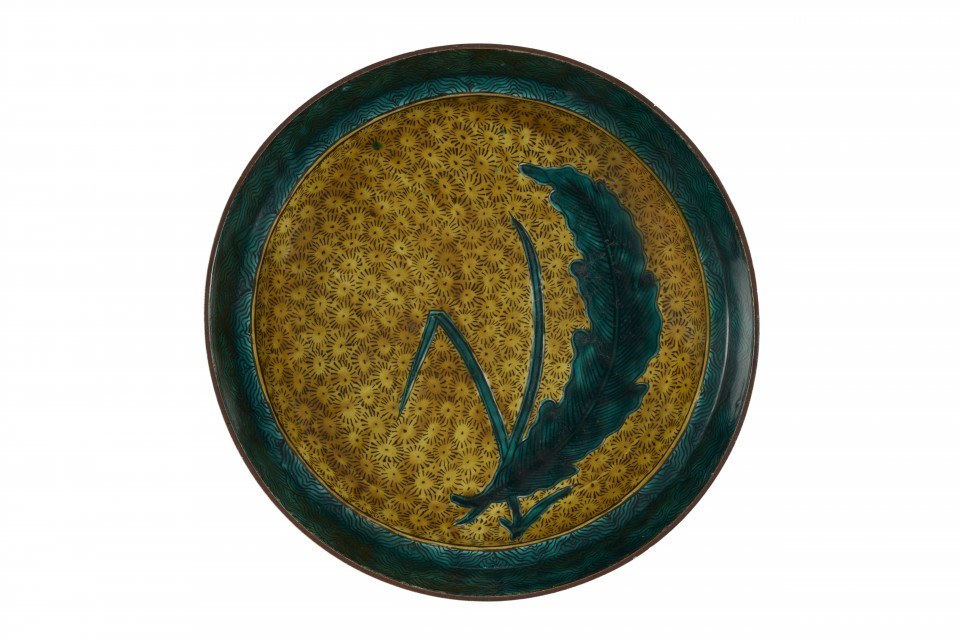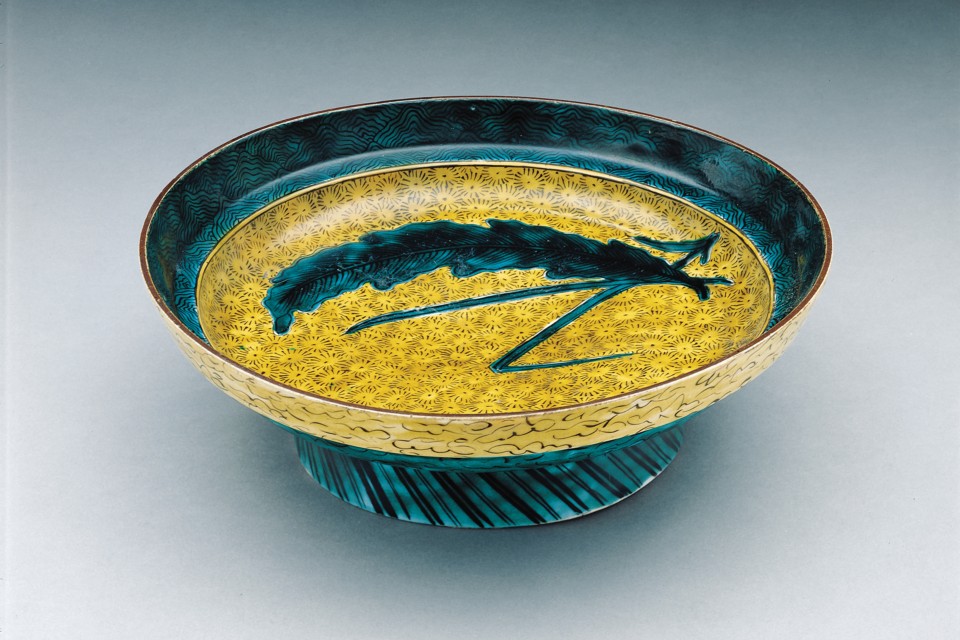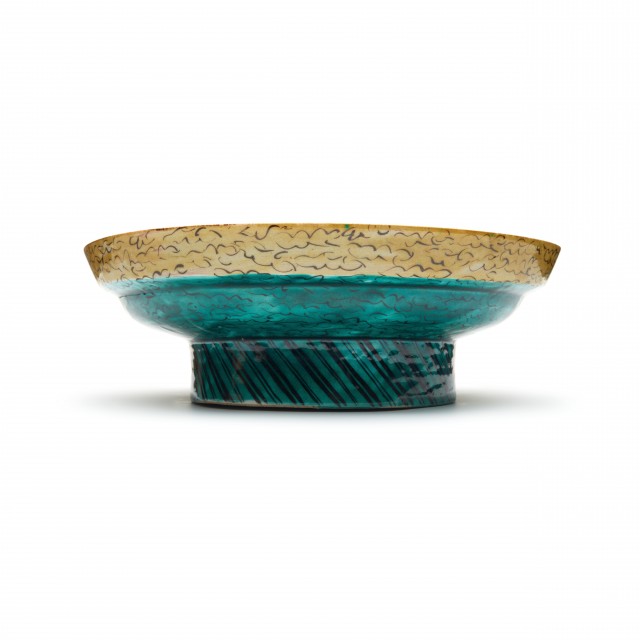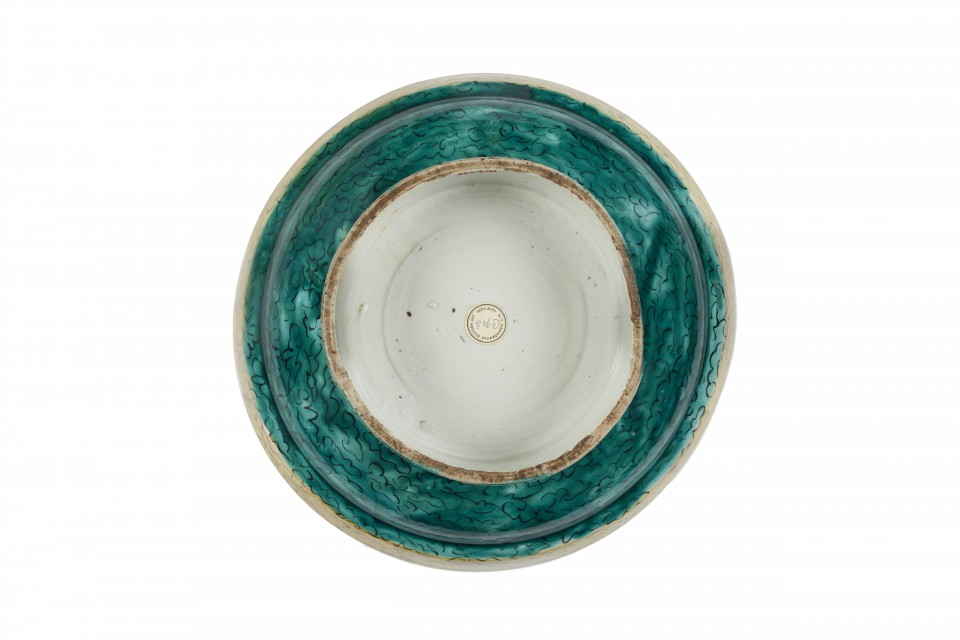Footed Dish

Photography by Synthescape, Digital image © Asia Society

Photography by Lynton Gardiner, Digital image © Asia Society

Photography by Synthescape, Digital image © Asia Society

Photography by Synthescape, Digital image © Asia Society
Footed Dish
Mid- to late 17th century
Japan, Saga Prefecture
Porcelain painted with overglaze enamels (Arita ware, Kutani style)
H. 4 x Diam. 12 1/4 in. (10.2 x 31.1 cm)
Asia Society, New York: Mr. and Mrs. John D. Rockefeller 3rd Collection, 1979.245
Licensing inquiries
The fabulous spread of yellow on the interior of this dish contrasting against the deep green of the rim and the floating central motif (two blades of grass and one large leaf) creates a dramatic visual tableau. This two-color dynamic also runs on the exterior of the dish, and on both the interior and exterior, abstract patterns outlined in black fill the yellow and green fields. The bold design and colors of this dish make it easy to understand the enormous popularity of ko-kutani ware, especially during the late 17th and early 18th centuries. Unlike Kakiemon-style porcelain, ko-kutani enameled products circulated within Japan, though some of them seem to have made their way to Southeast Asia.




